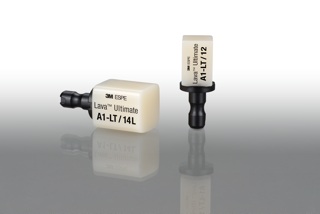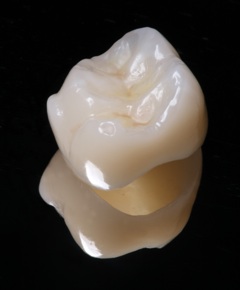Preventing Debonds from 3M
I sat in a meeting last week with some of the corporate folks at 3M along with the rest of the faculty. One of the things that was discussed by them to us was the perception of crowns having flex to them and debonding. They wanted us to know that there was no increase of incidence of debonds based on the calls coming into them compared to other materials. That being said, they are aware and want to address any concerns. It has been determined that if there has been reports of debonds, they have been noted on the tooth to cement interface mostly and with full crowns. 3M has come up with steps they feel are important to help prevent this.
1) Make sure you are adequately sandblasting. The milled surface can be smooth so sandblasting an adequate amount will improve the intaglio surface to bond to. Rinse the AlO2 and dry the restoration and then place a thin layer of scotchbond universal onto the restoration and thin it well for 10 seconds. 2) Etch at least the enamel, total etch would be even more preferred. Enamel ring should be etched for 10 seconds first and then dentin is etched in combo with enamel for another 10 seconds. The two are rinsed together for 10 seconds and dried but not dessicated. 3) Scrub scotchbond universal into the dentin for 20 seconds. Don't just place the bonding agent and leave it for 20 seconds. It is important to agitate and work the bonding agent into the tubules. 4) Airdry this for 10 seconds to make sure there is no pooling on the bonding agent and then light cure for 10 seconds. It is better to over-thin than not thin enough. Curing the bonding agent on the tooth before cementation has shown higher initial bond strengths in tests than not curing the bonding agent prior to cementation. This is obvioulsy important when we are placing a CEREC restoration and trying to maximize the initial strength of our bond. There have not been many reports of such debonds with inlays and onlays. This is likely due to the prep form and built in retention as well as the remaining bands of enamel. Try these steps and you will likely eliminate any potential problems you may have had previously post cementation.

The problem with Lava Ultimate might be similar to Zr Crowns. Since the surface cannot be etched, most bonded cementation techniques fail. I have seen patients with relatively new Zr crowns that look beautiful come in complaining of sensitivity. Inevitably I grab the unit with a GC plier and have it pop out, leaving the resin on the tooth. The solution: conventional cementation. This may also be what is needed in the case of lava. Sandblasting does give a more retentive surface but will in no way give you the micromechanical retention of an etched surface.
I have placed several Lava inlays and have complaints of sensitivity in a couple of them. This is never a problem with my all ceramic units, I have been using the same bonding technique for Lava that I use for E-Max or Vita and therefore I would speculate that there is an adhesion problem at rhe restorations interface.




